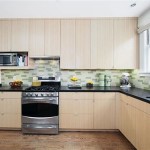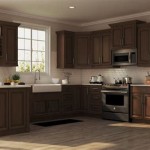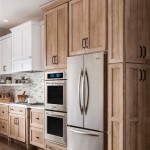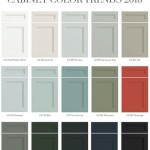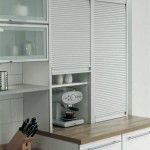Standard Thickness Of Kitchen Cabinet Doors
Kitchen cabinet doors are a significant design element that contributes to the overall aesthetics and functionality of the kitchen. Their thickness plays a crucial role in their durability, appearance, and performance. Choosing the right thickness for kitchen cabinet doors involves considering various factors, including style, budget, and intended use. This article will delve into the standard thickness of kitchen cabinet doors and provide guidance on selecting the appropriate thickness for different applications.
Standard Thicknesses for Kitchen Cabinet Doors
The standard thickness for kitchen cabinet doors typically ranges from 3/4 inch (19mm) to 1 inch (25mm). This thickness is generally considered suitable for most residential kitchens and offers a balance between durability and cost-effectiveness.
3/4 inch (19mm): This thickness is the most common and widely used for kitchen cabinet doors. It provides a sturdy construction while maintaining a visually appealing profile. It is typically used for both solid wood and framed doors, offering a good combination of strength and affordability.
1 inch (25mm): A 1-inch thick cabinet door offers enhanced durability and a more substantial feel. It is often preferred for heavier doors, such as those made from solid wood or with elaborate detailing. This thickness can also contribute to a more luxurious look and feel.
Factors to Consider When Choosing Cabinet Door Thickness
While standard thicknesses provide a good starting point, several factors influence the optimal thickness for kitchen cabinet doors. These factors include:
1. Material
The material used for the cabinet doors significantly impacts the required thickness. Solid wood doors tend to be heavier than doors made from plywood, particleboard, or MDF. Thicker doors are essential to ensure stability and prevent warping in solid wood doors. For lighter materials, a thinner thickness may suffice.
2. Cabinet Style
The style of the kitchen cabinets also influences the appropriate door thickness. Contemporary cabinets often feature sleek, minimalist designs with thin cabinet doors. Traditional or ornate cabinets, on the other hand, may require thicker doors to accommodate intricate carvings or raised panels.
3. Functionality
Consider how the cabinets will be used and the weight they will need to support. Cabinets for heavy items, such as pots and pans, may require thicker doors for stability and longevity. Cabinets with frequent use might also benefit from thicker doors to withstand wear and tear.
4. Budget
Thicker cabinet doors generally cost more than thinner doors due to the additional material and labor involved. If budget is a concern, consider 3/4-inch thick doors, which offer a balance of durability and affordability. If budget allows, thicker doors can enhance the overall look and feel of the kitchen.
Conclusion
The standard thickness of kitchen cabinet doors provides a practical starting point for selecting the right thickness. However, considering factors such as material, style, functionality, and budget allows for a more informed decision that meets the specific needs and preferences of the homeowner. By carefully weighing these factors, homeowners can choose cabinet doors that are both aesthetically pleasing and durable, contributing to a beautiful and functional kitchen.

Proper Depth For Frameless Cabinets

Cabinet Composition What Makes A High Quality

Cabinet Face Dimensions

Selecting Cabinet Doors For A New Kitchen Craig Allen Designs

Cabinet Quality Kitchen Rta Cabinets Orange County Pre Made Whole Quartz Countertop Slab Prefab Granite Installation

Kitchen Cabinet Sizes What Are Standard Dimensions Of Cabinets

Hampton Bay 30 In W X 12 D H Assembled Wall Kitchen Cabinet Satin White Kw3030 Sw The Home Depot

Understanding Cabinet Door Sizes And Hinges Houseful Of Handmade

Hampton Bay Shaker 30 In W X 24 D 34 5 H Assembled Base Kitchen Cabinet Java With Ball Bearing Drawer Glides Kb30 Sjm The Home Depot

Selecting Cabinet Doors For A New Kitchen Craig Allen Designs
Related Posts



